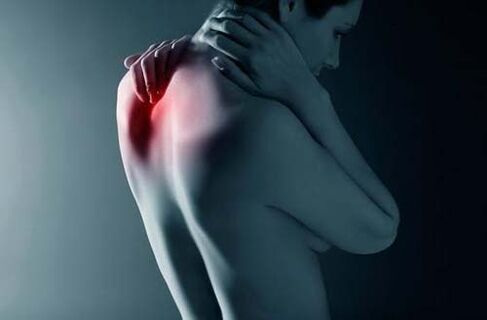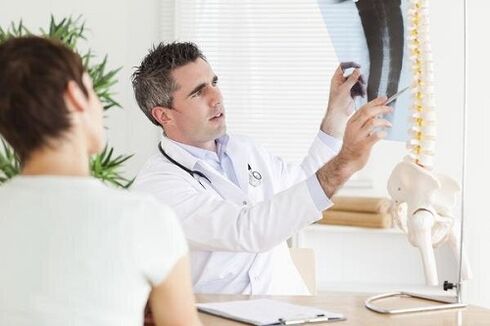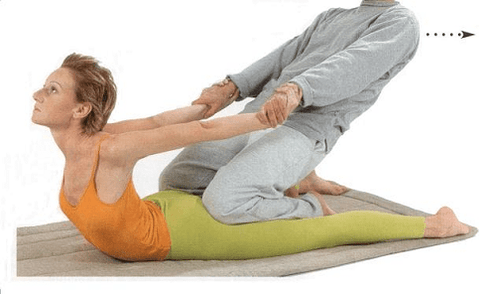By osteochondrosis of the thoracic spine, doctors mean the corresponding degenerative-dystrophic processes in this area, resulting in pathological deformations of cartilage and bone tissue, destruction of ligaments, joints and intervertebral discs.
Appearance reasons

The thothoracic spine is less mobile than the cervical and lumbar spine, so pathological processes in this area are less visible, mainly due to the strong design of the connection of the ribs, sternum and vertebrae.However, it occurs less often than other types of osteochondrosis.Most people who constantly sit at home or at work are prone to weakness of the spinal muscles, weakness of scoliosis, injury to this area, poor posture and, as a result, weakness of thoracic osteochondrosis.
As mentioned above, the main cause of the disease is considered to be pathological deformations in the intervertebral discs and joints of the structure.Cartilaginous surfaces are destroyed, discs are thin, osteophytes, protrusions, tears, nucleus pulposus is significantly reduced, and as a result, radicular structures of spinal nerves are damaged, compressive myelopathy and vascular myeloschaemia occur.
Symptoms and first signs of thoracic osteochondrosis
Symptoms of osteochondrosis are not as pronounced as in other types of this disease, and inactive doctors occasionally confuse them with symptoms of other diseases.The above problem leads to the development of pain in the thoracic and transverse region, which is significantly aggravated by movement and physical work.The detached nerve fibers cause unpleasant sensations in the heart and even the liver, as well as pathologies in the functioning of a number of other organs.
There are two types of pain associated with osteochondrosis of the thoracic region.
- Dorsalgia is a long-term moderate pain syndrome in the affected area, accompanied by sensations that are numb.
- Dorsago - Paroxysmal severe pain, intense and, as a rule, short-term.In this case, the patient may have difficulty breathing and motor skills in the affected area.
General symptoms
- Painful sensations in the interscapular region.It is accompanied by "fire" of the intercostal nerves in the affected area and corresponding neuralgia.
- Ischemia-like pain syndrome on the left side of the chest.
- Back pain in the chest increases significantly with high physical activity.
- Limited thoracic activity/mobility.This symptom, characteristic of osteochondrosis of the thoracic region, is often confused with manifestations of scoliotic deformation, as well as ankylosing spondylitis / forester / scheerman-mao diseases.
- "Responsibility" in the gastrointestinal tract, heart and liver.
- Sexual dysfunction.
- Partial chest numbness.
Treatment of osteochondrosis of the thoracic region
Osteochondrosis of the thoracic spine is treated only with complex long-term therapy, which includes exercise sets, various physical and manual procedures, as well as drugs.
How to treat?

The treatment process consists of several stages.The first is the elimination of pain symptoms.In addition, restorative and preventive therapy is used, which includes a number of techniques and approaches - from acupuncture to physical therapy.The last stage is maintenance therapy.The duration of treatment for the disease varies widely and depends both on the current condition of the patient and on the stage of osteochondrosis itself, as well as on medical techniques.
Popular drugs for thoracic osteochondrosis
- Pain relievers.NSAIDS and analgesics based on various compounds.
- Hydroproprotectors.It is necessary to catalyze the process of regeneration of damaged cartilage.
- Vitamins.Most often, preparations with complete vitamin complexes or B group elements are prescribed.
- External means.Creams or ointments based on glucocorticosteroids.In addition, local agents are used to relieve inflammation in the affected area and alleviate the symptoms of the disease.
- Injections and needles.Most often, they are performed with hospital admission and are complexes of paravertebral blockade with a long topical anesthesia.In addition, such drugs improve blood circulation and promote the regeneration of cartilage tissue.
Massage
Massage not only reduces the severity of the symptoms of the disease, but also helps a person to recover, resulting in a positive effect from other elements of complex therapy.The clinical picture of osteochondrosis of the thoracic spine is defined in the same way as the presence of chronic diseases and contraindications.
Manual therapy eliminates pain syndromes of various etiologies, prevents atrophy of the spine, prevents blood circulation and normalizes nutrition of intervertebral discs, relaxes static muscles in the affected area and triggers natural processes of cartilage tissue regeneration.

The main types of massage for osteochondrosis of the thoracic spine:
- Stain.
- Medicine.
- Hardware-canned.
- Reflex-priosteal.
- Connective tissue.
Gymnastics and exercise therapy
Therapeutic physical education and gymnastic exercises are one of the most important stages in the recovery of the spine after osteochondrosis.Of course, the stage of the disease and the patient's condition should be determined only by a professional doctor.
The main task of exercise therapy / gymnastics is the systematic development of cartilage, as well as strengthening of the spinal muscles.With an appropriate diagnosis, the author's set of exercises is often prescribed: The system includes both direct effective procedures in the problem area and indicator exercises that facilitate monitoring the effectiveness of treatment, as well as indicator exercises.
In personal practice, they also use variable sets of exercises using a different method using special devices.In this case, the stages of treatment:
- Relieve spasms and fighting feelings.
- Therapeutic load on the short dorsal muscles.
- Normalization of circulation in intervertebral discs.
- Restoration of the main structure of the spine.
Physiotherapy and alternative therapy

This method of treatment of osteochondrosis of the thoracic spine can include alternative therapy, as well as various physical procedures.The most famous and popular methods:
- Electrophoresis.A well-known non-operative method of spinal manipulation that has been used since the 70s of the last century.
- It stretches straight.Of course, this method is a relatively safe and effective way of straightening the spine if it is performed by a fair specialist.It is carried out on a massage-traction couch.
- Vacuum therapy.Active type of impact on the affected area using vacuum boxes.
- Acupuncture.Classical acupuncture is performed with special thin needles that are inserted to a certain depth of the epithelium at acupuncture points on the back.
- Laser puncture.An activity similar to acupuncture, but performed using a laser beam.
- Magnetopuncture.Impact on problem areas with an alternating magnetic field.
- Osteopathy.A complex method that includes elements of massage, chiropractic and orthopedic methods.
- Electrical stimulation.Using electric current to normalize the functioning of the spine.
- Shock wave therapy.The technique is based on the use of infrared acoustic waves in the treatment of osteochondrosis of the thoracic spine.
- Traction machine decompression.An automated analogue of direct stretching.
Prevention
The rules for preventing this disease are simple and unambiguous:
- Regular exercise under the supervision of an orthopedist.
- Weight normalization.
- Consumption of foods and medicines rich in magnesium and calcium.
- Correct posture when working while sitting.
- Get rid of bad habits.
Question - answer
What pain occurs with osteochondrosis of the thoracic spine?
Patients with this type of osteochondrosis experience two types of pain syndromes.
- Dorsago is a severe short-term pain that manifests itself against the background of decreased motor activity in the affected area and difficulty breathing.
- Dorsalgia is a long-term pain of moderate or low intensity that increases with physical activity.
Localization of pain sensations above:
- Interscapular region.
- Lumbar chest pain with partial numbness.
- Painful "pulls" in the left upper chest similar to ischemia.
- It affects pain in the liver, heart and gastrointestinal tract.
Is gymnastics useful for thoracic osteochondrosis?
Gymnastics and exercise therapy are one of the main elements of complex therapy for the disease.With its help, you can strengthen your back muscles, improve blood microcirculation and develop cartilage / intervertebral discs.Of course, gymnastics itself, as a separate type of therapy, will not help to get rid of osteochondrosis of the thoracic spine: in order to strengthen the positive effect, it is necessary to take appropriate medication, as well as participate in physical procedures.























